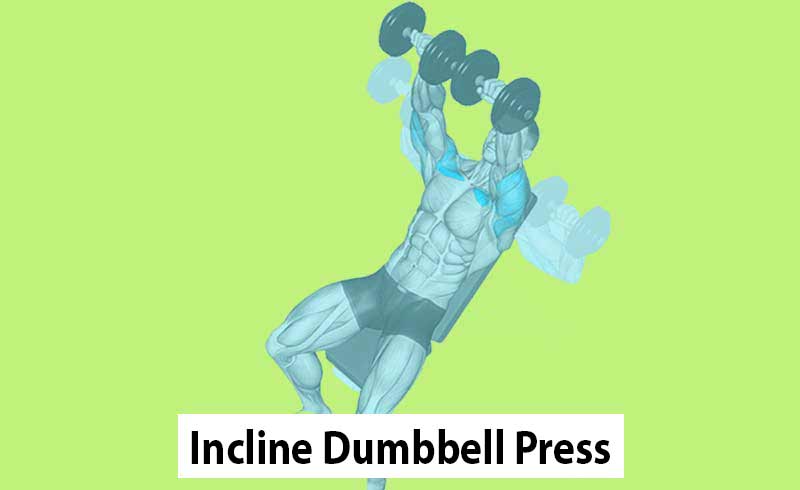To build a stronger upper chest, include incline dumbbell bench presses in your workouts.
This exercise also enhances your upper body appearance and function.
It is easy to learn and works well for beginners and advanced trainers.
In this article, I will teach you the right way to do the incline dumbbell chest press, its benefits, how to avoid mistakes, its variations, and some alternative exercises that target the same muscle groups.
Exercise Details:
- Targeted Muscles: Upper part of your chest (pectoralis major)
- Assisting Muscles: Front of your shoulders (anterior deltoids), back of your upper arms (triceps)
- Type: Compound exercise (works multiple muscles at once)
- Movement: Pushing motion
What Is Incline Dumbbell Chest Press?
The incline dumbbell chest press, also called the dumbbell incline press, is a workout movement primarily focusing on the muscles in your upper chest, triceps, and the front of your shoulders (known as the anterior deltoids).
To perform this exercise, you need an adjustable bench that can be set at an inclined angle.
This adjustable angle typically ranges between 30 to 45 degrees, although slight variations can be made based on your preferences and training goals.
Muscles Targeted by Incline Dumbbell Press
The incline dumbbell chest press is a strength training exercise that specifically targets the upper part of the pectoralis major muscles, which are the large chest muscles.
In addition to its main focus on the upper chest, the incline dumbbell bench press engages other muscles to support and enhance the movement.
These assisting muscles, known as synergist muscles, play a role in helping the primary muscles perform the exercise effectively:
- Rhomboids: During the incline dumbbell press, they stabilize the shoulder blades and assist in maintaining proper posture.
- Anterior Deltoids: Help raise arms forward in the press, and aid controlled dumbbell movement.
- Latissimus Dorsi: Not the primary focus, but stabilizes and supports shoulders during the press.
Apart from these synergist muscles, there are stabilizer muscles that contribute to maintaining stability and balance during the exercise:
- Biceps Brachii: Stabilizes elbows, and controls dumbbell motion during the press.
- Brachialis: Supports elbow flexion in the pressing motion.
- Triceps Brachii: Stabilizes elbow joint, and extends arms during the press.
- Wrist Flexors: Maintain grip, and ensure control by flexing wrists.
Benefits of the Incline Dumbbell Press
- Targeted Muscle Growth: The incline angle targets the upper chest, helping you achieve a well-rounded chest appearance.
- Functional Strength: Improved chest strength enhances everyday activities and sports performance.
- Muscle Balance: Address muscle imbalances by focusing on the often neglected upper chest muscles.
- Variety: Add variety to your chest workouts and prevent plateaus.
Explanation of Incline Angle
The incline dumbbell chest press targets the upper chest effectively. However, the front deltoid muscle can take over, limiting its benefits.
This is due to the close proximity of the upper chest and anterior deltoids. To avoid this, it’s crucial to use the right bench angle.
Research suggests that a 30-degree incline from flat is ideal to engage the upper chest while minimizing strain on the front deltoids. Using a 60-degree angle, often chosen for incline presses, shifts focus to the front deltoids.
Maintaining an upright position emphasizes the front deltoids, as the arms move directly against gravity.
For optimal upper chest activation, stick to a 30-degree bench angle. If you increase the angle, avoid going beyond 45 degrees, as this will emphasize the front deltoids.
Guide to Performing Incline Dumbbell Press: How To Do It Properly
First things first, remember that whether you do flat, incline, or decline bench presses, your whole chest gets involved. But with incline presses, we focus a bit more on the upper chest.
- Lie down on an inclined bench set at an angle of about 45 degrees.
- Hold a dumbbell in each hand, resting them on your thighs.
- Use your legs to help you lift the dumbbells up to your chest level as you lie back on the bench.
- Keep your elbows slightly bent and the dumbbells close to the sides of your chest.
- Push the dumbbells upward while exhaling, extending your arms almost fully.
- Hold for a moment at the top, feeling your chest muscles working.
- Lower the dumbbells back down to chest level while inhaling.
- Repeat this movement for 10 to 12 repetitions.
While on the incline bench, maintain a slight arch in your back. This arch allows you to pack your shoulders more tightly, promoting proper form and muscle engagement.
Exercise Tips:
Achieving better results requires mastering the correct form.
Here’s a breakdown of key points and tips to keep in mind:
- Shoulder Blades: Pin your shoulder blades back and down throughout the exercise. This stabilizes your shoulders and prevents unnecessary strain.
- Elbow Position: Maintain a slight bend in your elbows to keep tension on your chest muscles, minimizing stress on your joints.
- Controlled Movement: Focus on controlled and smooth movements. Avoid using momentum to lift the dumbbells, as it reduces the effectiveness of the exercise.
- Breathing: Inhale as you lower the dumbbells and exhale as you push them back up. This helps stabilize your core and provide power during the lift.
- Plant your feet firmly on the ground for stability.
- Keep your wrists straight and in line with your forearms to avoid strain.
- Don’t rush: Perform the exercise in a controlled manner.
- Start with a weight that challenges you but allows you to maintain proper form.
- Engage your core muscles to stabilize your body throughout the movement.
- Avoid arching your back excessively. Keep a natural curve in your lower back.
- Focus on feeling the stretch and contraction in your chest muscles with each repetition.
- If you want to work on balance and stability, try alternating between pressing with one arm at a time.
Give these tips a try, and you might find you can lift more weight with better form. It’s not about crazy exercises; it’s about doing the basics right.
Best Variations of Incline Dumbbell Pec Press
The incline dumbbell bench press offers versatile variations to accommodate diverse fitness levels. Tailor these variations to suit your needs and goals.
1. Reverse Grip Incline Dumbbell Bench Press
The Reverse Grip Incline Dumbbell Bench Press is a potent compound exercise targeting the upper chest muscles for substantial gains in muscle and strength.
How To Perform Reverse Grip Incline Dumbbell Bench Press:

- Lie on a 30-45 degree inclined bench, gripping dumbbells with a reverse hand position.
- Extend dumbbells above your chest, then lower them to chest level while keeping elbows slightly bent.
- Bring your arms toward your body’s midline to engage upper pec muscles, and repeat.
Tips:
- Start light to perfect form before increasing weight.
- Maintain stable footing throughout the exercise.
2. Single Hand Dumbbell Bench Press
The Single Hand Dumbbell Bench Press is a variation of the standard dumbbell bench press exercise. In this version, emphasis is placed on targeting one side of the body at a time, allowing for increased focus and effort on each side individually.
How to Do Single Arm Dumbbell Bench Press:
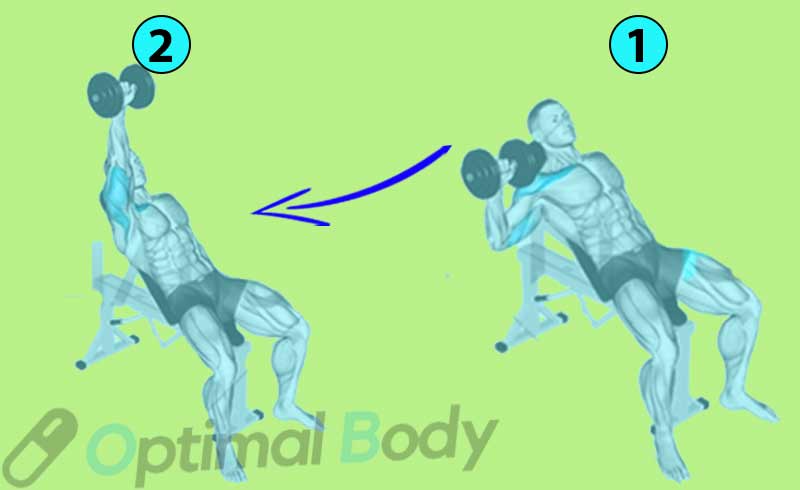
- Lie down on an incline bench with a dumbbell in one hand, positioned directly above the chest.
- Slowly lower the dumbbell towards the chest.
- Press the dumbbell back up to the starting position with a fully extended arm.
- Complete the desired number of repetitions on one side before switching to the other.
Tips:
- Choose an appropriate weight that allows you to maintain proper form.
- Ensure that your body remains stable and balanced on the bench throughout the exercise.
- Use your free hand to brace and stabilize yourself on the bench if needed.
- Focus on controlling the movement, both during the lowering and raising phases.
- Perform an equal number of repetitions on both sides to maintain balance and symmetry in your training.
- Be mindful of any imbalances or discomfort and adjust the weight accordingly.
3. Incline Dumbbell Squeeze Press
The Incline Dumbbell Squeeze Press is a highly effective chest press variation focusing on the inner and upper chest.
How To Perform Incline Dumbbell Squeeze Press:
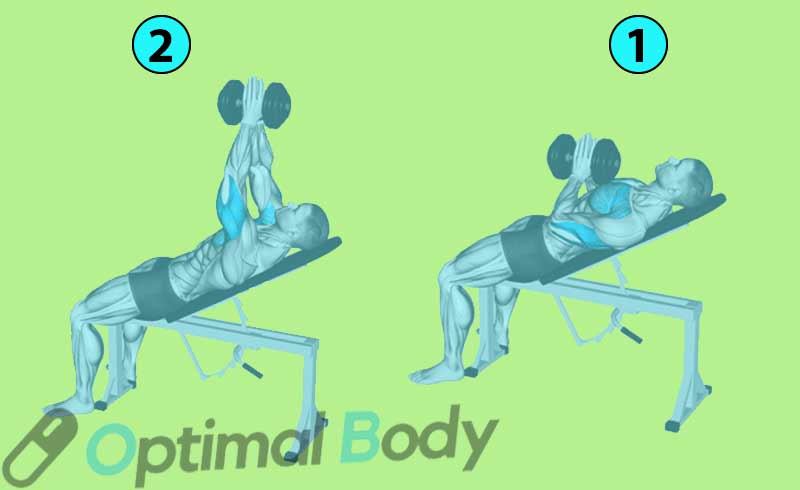
- Lie on an incline bench and hold a single dumbbell with both hands.
- Position the dumbbell centrally over your chest and lift it.
- Lower the dumbbell to your chest, actively squeeze it between your hands, and push it back up.
Tips:
- Exhale during the upward phase.
- Keep tension in the pecs by not fully extending your elbows.
- Incorporate these variations into your routine to diversify your upper chest training
4. Dumbbell Incline Alternate Press
The Dumbbell Incline Alternate Press enhances upper chest size and strength. This exercise concentrates on the upper pectoralis major while engaging the anterior deltoids and triceps brachii.
How To Do Dumbbell Incline Alternate Chest Bench Press:
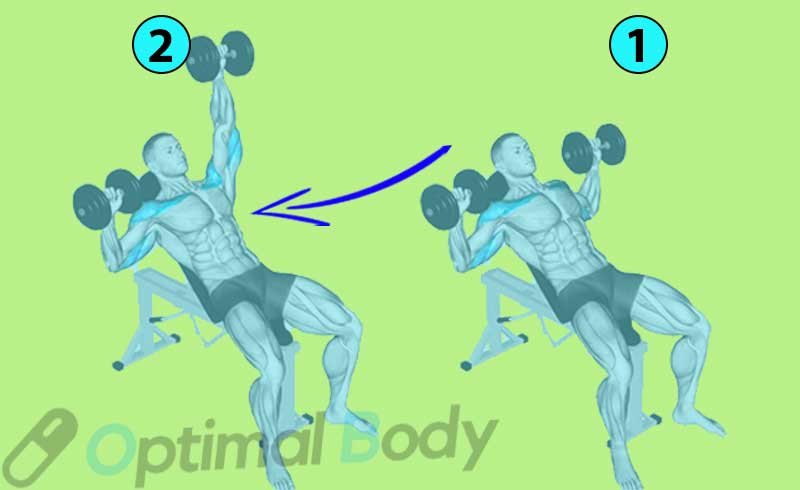
- Lie on a 30-45 degree inclined bench with dumbbells held above your chest, arms fully extended, and palms facing outward.
- Draw your shoulder blades together, slightly puff out your chest, and lower the dumbbells to your chest’s sides.
- Press one dumbbell upward as the other remains at your side, then switch sides during the descent.
Tips:
- Employ a full range of motion.
- Keep both feet securely grounded.
- Experiment with bench angles for diverse chest engagement.
Here are more other variations:
Neutral Grip Incline Press:
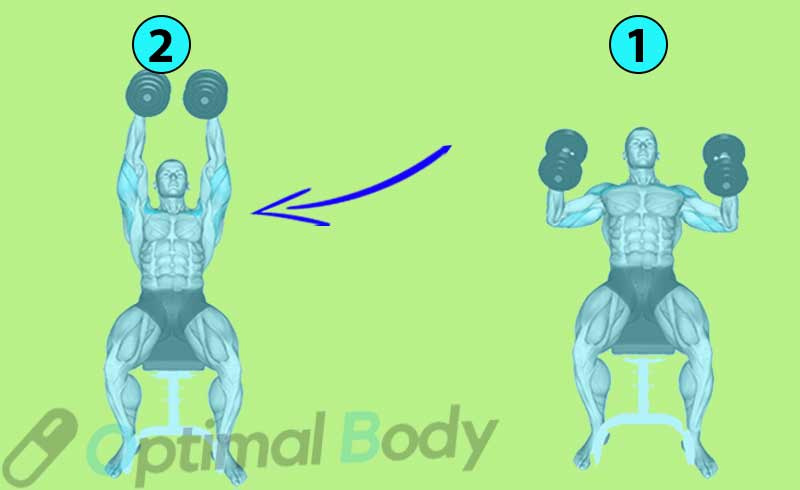
Use dumbbells with a neutral grip (palms facing each other) to put less strain on your shoulders and engage your triceps more.
Pause Reps:
Pause for a couple of seconds at the bottom of each repetition to increase time under tension and stimulate muscle growth.
Best Incline Dumbbell Press Alternatives
Before delving into the top alternatives for the incline dumbbell chest press, it’s important to consider certain criteria for a suitable replacement.
An effective alternative should fulfill the following requirements:
- Activation of Similar Muscle Groups: It should engage the same muscle groups targeted in the incline dumbbell press.
- Isolation of Muscles: The exercise should isolate the muscle groups during its execution, allowing for focused work.
- Extended Range of Motion: It should provide a comprehensive range of motion to effectively train the chest muscles.
Now, let’s explore the top alternatives:
1. Incline Bench Press:
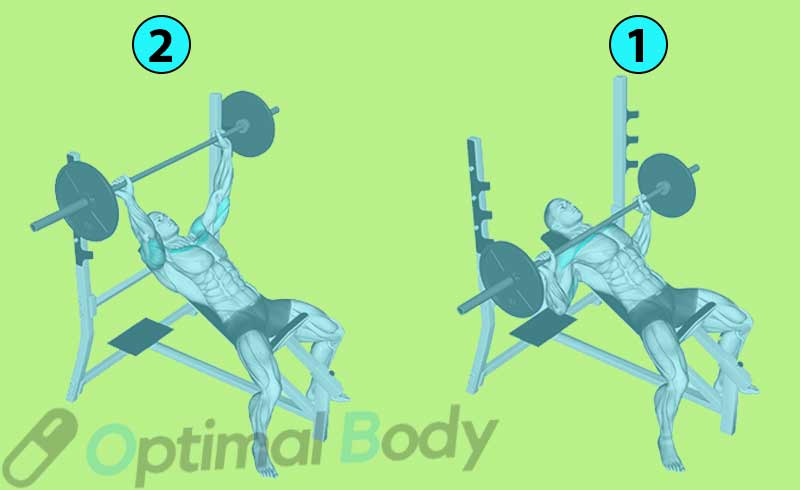
The incline bench press stands as a classic and highly effective alternative to the incline dumbbell bench press, with a focus on the upper chest.
This exercise is renowned for building substantial upper pectoral muscles and overall upper body strength.
It particularly shines in developing muscle mass in the upper and middle regions of the pectoral muscles.
2. Incline Cable Flyes
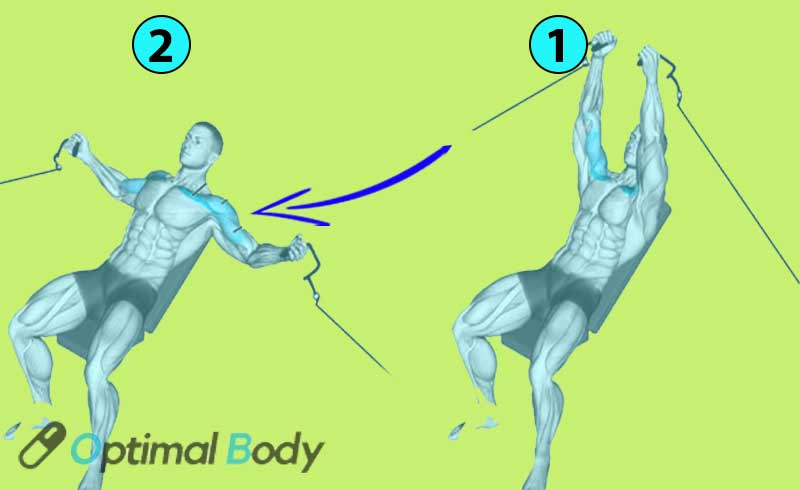
For those looking to switch up their workout routine or address safety concerns, the incline cable fly is a viable replacement for the incline dumbbell press.
This exercise preserves a similar motion while offering distinct advantages.
The incline cable fly ensures constant muscle engagement due to the cable machine’s tension, contributing to a controlled workout.
The pulley wheel’s adjustable elevation accommodates varying ranges of motion and mobility levels, enhancing the exercise’s effectiveness.
To substitute the dumbbell incline press with the incline cable fly, adjust your approach slightly.
The cable machine’s stability allows for higher weights while maintaining the same set and rep volume.
This adjustment offers a fresh challenge to the muscles while upholding the workout’s intended intensity.
3. Decline Push-Up
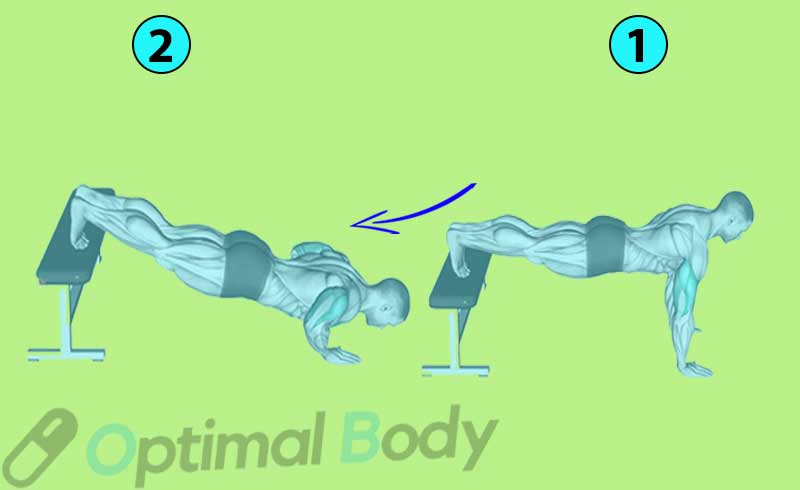
When seeking a bodyweight substitute for the incline dumbbell chest press, the decline push-up emerges as an excellent option.
By positioning your feet on an elevated surface, such as a bench, this exercise places emphasis on the upper pectoral muscles.
It’s akin to a regular push-up but with an added challenge that transitions in on the upper chest area.
4. Low Cable Fly (Low To High Cable Flye):
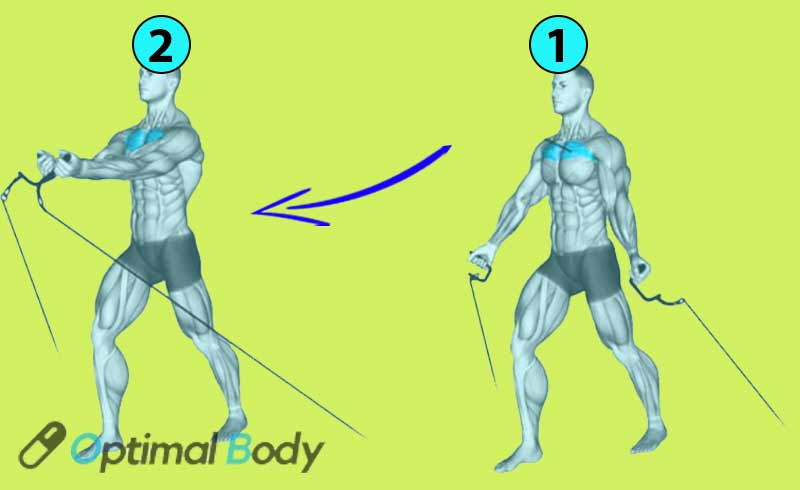
If you have access to cable equipment, the low to high cable fly is a commendable alternative because it primarily strengthens the pushing muscles, including the chest, biceps, and shoulders.
The constant resistance provided by the cable helps in developing the central chest muscles, while the low-to-high motion effectively targets the upper and inner pectoral muscles.
5. Incline Dumbbell Fly:
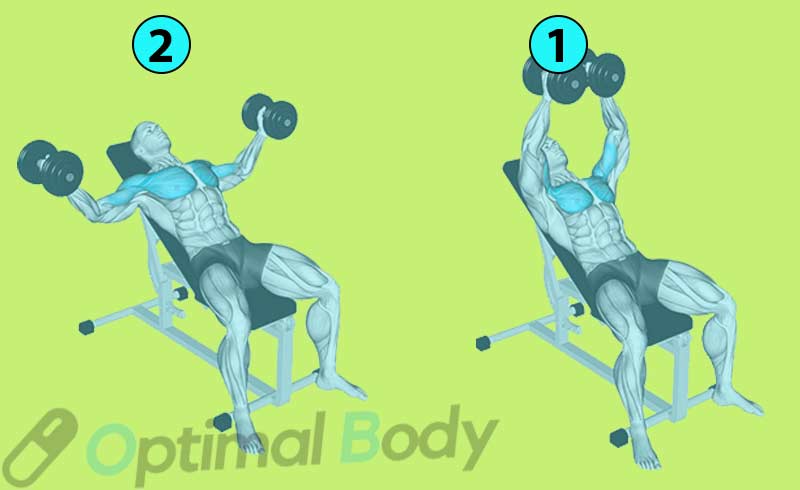
The incline dumbbell fly, performed using an incline bench, is another top-notch option.
By using an incline angle, this variation isolates the upper chest muscles to a greater extent.
It’s a valuable addition to any upper chest workout routine, offering effective development of the harder-to-target upper pectorals.
6. Landmine Chest Presses
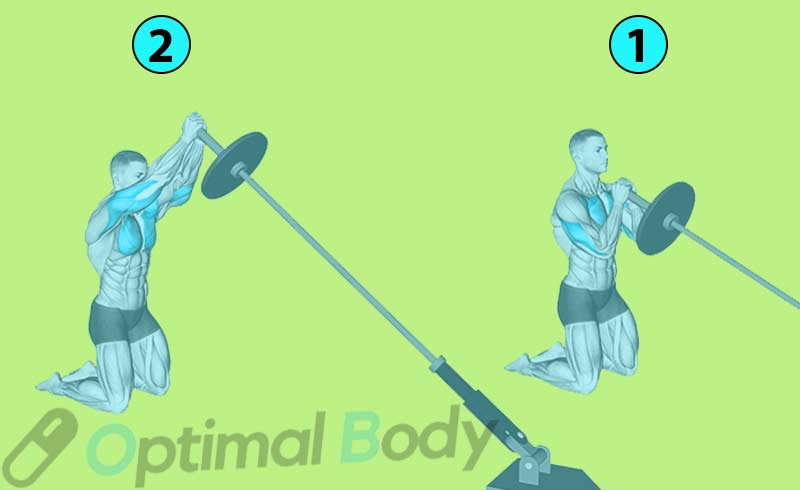
An alternate choice is the landmine chest press, which requires a barbell, weight plates, and a landmine attachment.
Despite the extra equipment, this exercise mirrors the incline dumbbell press’s muscle engagement and biomechanics.
The landmine press emphasizes the upper pectoralis major similar to the incline dumbbell press while involving related muscle groups.
Its angle of resistance closely resembles the incline dumbbell press, fostering comparable muscle activation and mechanics.
Although equipment-heavy, the landmine chest press effectively substitutes the incline dumbbell press, introducing diversity to workouts.
For programming, note that resistance translation between the two exercises isn’t direct.
Find your optimal weight through practice, while maintaining equal set and rep volume to ensure consistent intensity.
Check Also: The Best Landmine Chest Press Alternatives
7. Standing Upward Chest Fly:
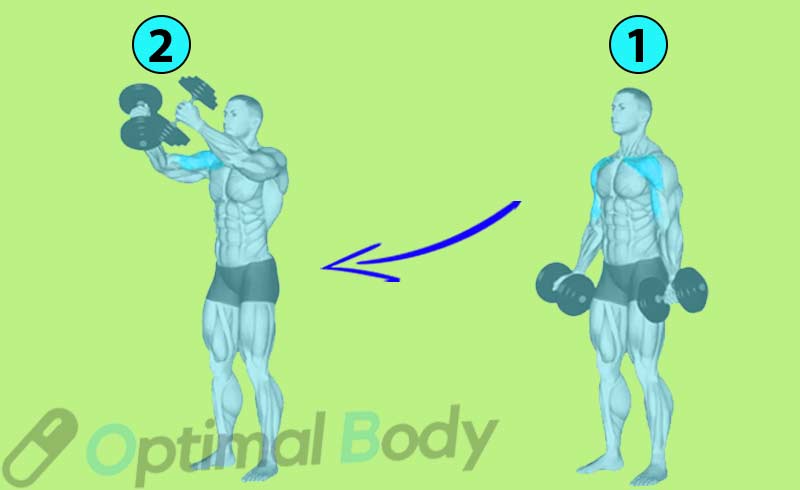
When seeking an alternative to the incline dumbbell chest press, the standing dumbbell chest fly fits the bill.
This exercise utilizes a pair of dumbbells and effectively targets the upper chest, enhancing its strength and appearance.
It resembles a front raise for shoulders, with a twist of the wrists that transforms it into a potent chest exercise.
Incorporating these alternatives into your workout routine can help you achieve balanced upper chest development while focusing on muscle activation, isolation, and a comprehensive range of motion.
References & Resources:
- Rodríguez-Ridao, David et al. “Effect of Five Bench Inclinations on the Electromyographic Activity of the Pectoralis Major, Anterior Deltoid, and Triceps Brachii during the Bench Press Exercise.” International journal of environmental research and public health vol. 17,19 7339. 8 Oct. 2020, doi:10.3390/ijerph17197339
- https://www.nasm.org/exercise-library/two-arm-incline-dumbbell-chest-press
- Green, CM, Comfort, P. (2007). The Affect of Grip Width on Bench Press Performance and Risk of Injury. Strength and Conditioning Journal, 29(5): 10-14.
- Tillaar, R., & Ettema, G. (2013). A Comparison of Muscle Activity in Concentric and Counter Movement Maximum Bench Press. Journal of Human Kinetics, 8(38), 63-71.
- Bench Press Calculator - April 22, 2024
- Press to Handstand: Ultimate Step-by-Step Guide - April 22, 2024
- Cable Press (How To Do, Benefits, Targeted Muscles, Alternative) - April 22, 2024

